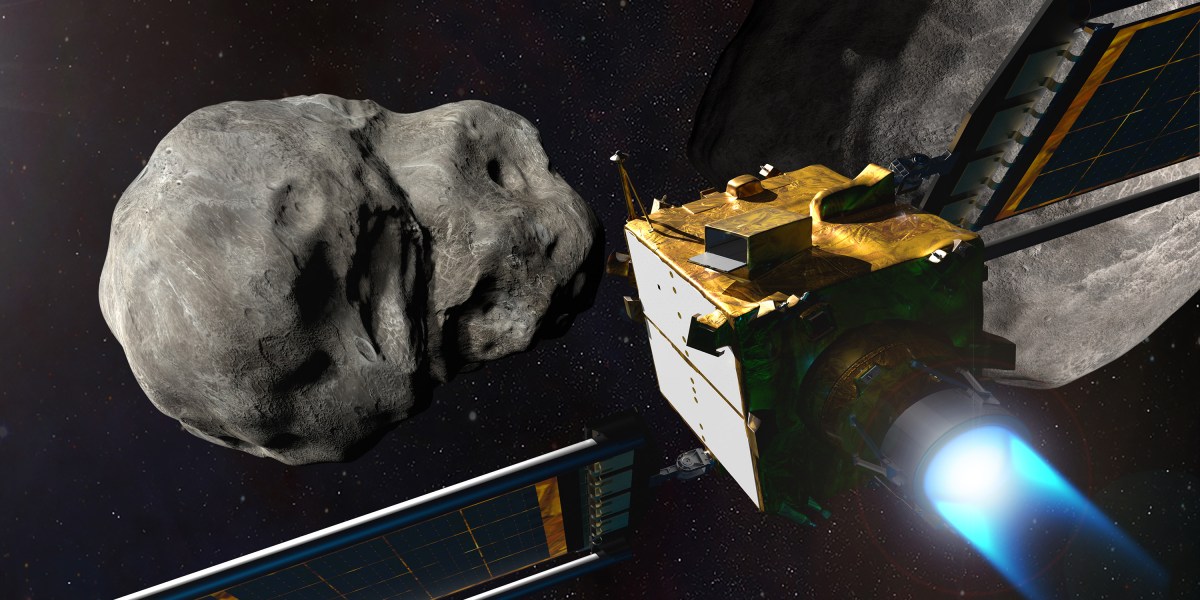
Led by Harrison Agrusa from the University of Maryland, researchers modeled how much DART might change the spin or rotation of Dimorphos by calculating how the momentum of the impact will alter the asteroid’s roll, pitch, and yaw. The results could be dramatic. “It could start tumbling and enter a chaotic state,” says Agrusa. “This was really quite a big surprise.”
The unexpected spinning poses some interesting challenges. It will add to the difficulty of landing on the asteroid, which ESA hopes to attempt with two small spacecraft on its Hera mission. It could also make future attempts to deflect an Earthbound asteroid more complicated, as any rotation can affect an asteroid’s path through space.
When DART slams into Dimorphos, the energy of the impact will be comparable to three tons of TNT exploding, sending thousands of pieces of debris spewing into space. Statler describes it as a golf cart traveling at 15,000 miles an hour smashing into the side of a football stadium. The force of the impact will not cause any immediate changes to Dimorphos’s spin, but within days things will start to change, according to Agrusa and his team.
Soon, Dimorphos will start to wobble very slightly. This wobble will grow and grow as the momentum from the impact throws the rotation of Dimorphos out of balance, with no friction in the vacuum of space to slow it down. Dimorphos may start to spin one way and another. It may start to rotate along its long axis, like a rotisserie. To an observer on Didymos looking into the sky, this seemingly sedate satellite will take on a new form—starting to swing wildly back and forth, its previously hidden sides now coming into view.
Within weeks, Dimorphos could spin so much that it enters a chaotic tumbling state where it is spinning uncontrollably around its axes. In more extreme scenarios the tidal lock with Didymos could break completely and Dimorphos might start flipping “head over heels,” says Agrusa.
Exactly what will happen will depend on a few things. Dimorphos’s shape will play an important part—if it’s more elongated rather than spherical, it’ll spin more chaotically. Radar observations so far suggest it is elongated, but we won’t know until just hours before DART hits, when it gets its first views of its small target.